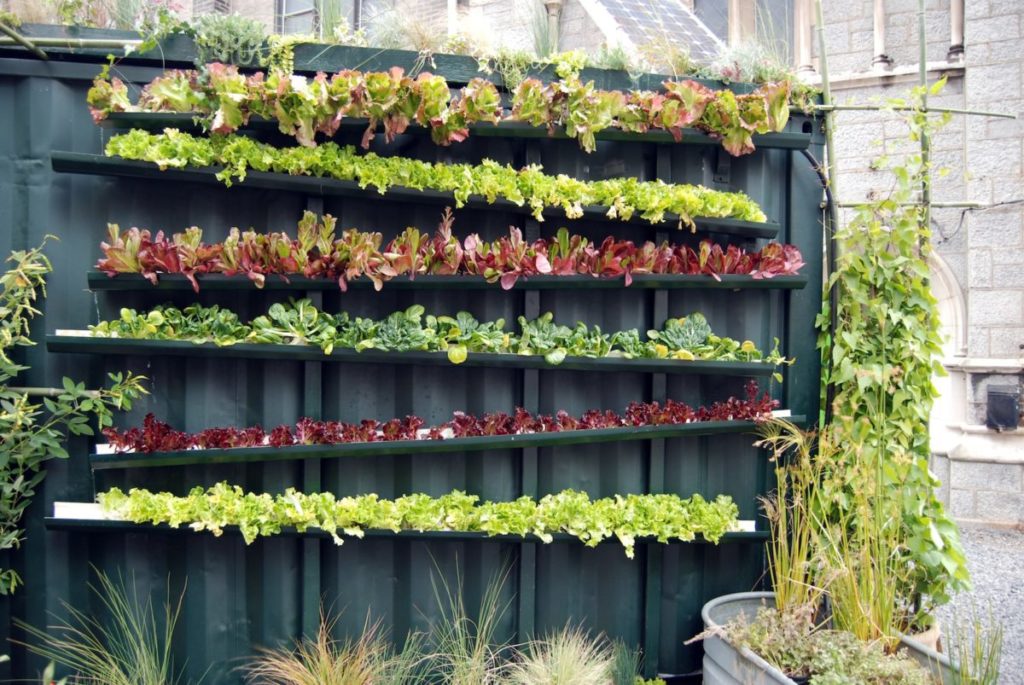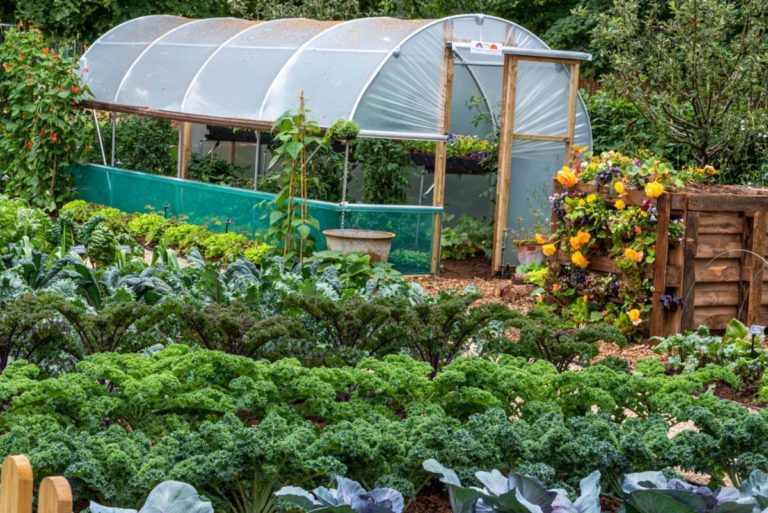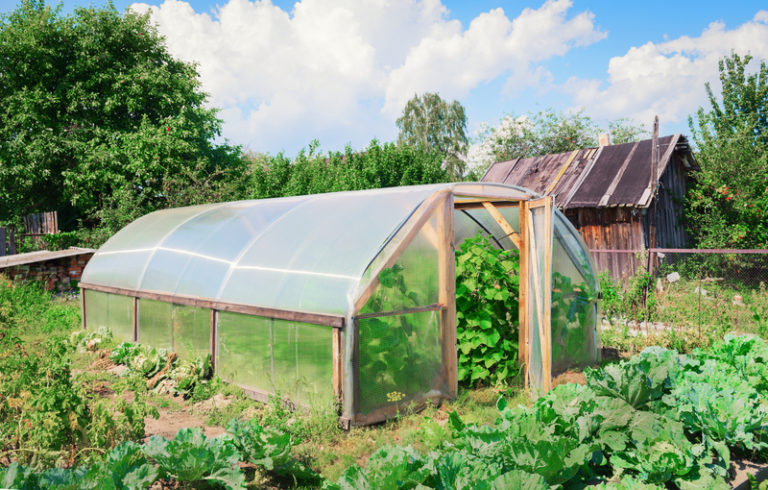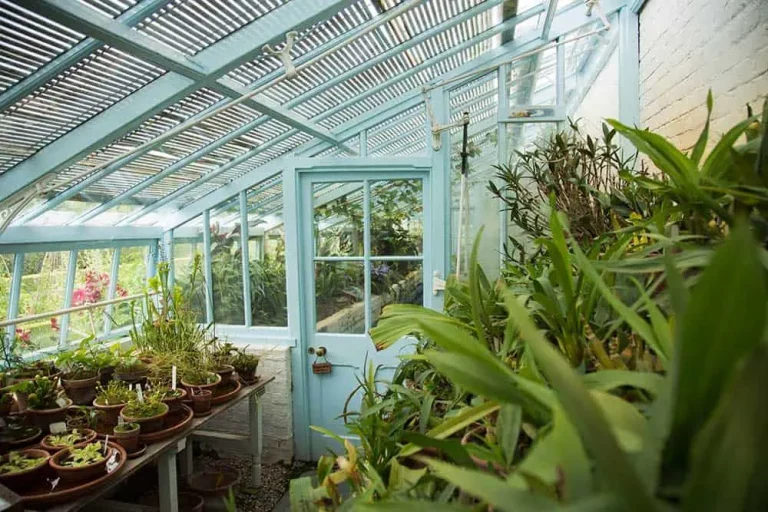Are you looking to revolutionize your gardening game and achieve sustainable living?
Look no further than setting up your own off-grid vertical farm!
Not only does this innovative system allow you to grow a wide variety of fruits, vegetables, and herbs in a compact space, but it also eliminates the need for expensive and harmful chemicals.
From designing your system to choosing the right crops, we’ve got everything you need to succeed in this exciting and rewarding journey towards self-sufficiency!
Choose the right location
Your vertical farm should be located in a spot with plenty of natural light and a consistent temperature range. Avoid areas with extreme temperatures, humidity, or wind.
Avoid areas with extreme temperatures, humidity, or wind, as these conditions can hinder the growth and development of your plants.
Natural light is essential for photosynthesis, the process by which plants convert sunlight into energy.
A location with plenty of direct sunlight will ensure that your plants receive the light they need to thrive.
However, be mindful of the intensity of the sunlight, as excessive heat can be detrimental to some crops.
Consistent temperatures are also vital for optimal plant growth.
Avoid areas with extreme temperature fluctuations, as these can cause stress on your plants and reduce yields.
The ideal temperature range for most crops is between 65°F and 75°F (18°C and 24°C), with a slight drop in temperature at night to promote blooming and fruiting.
In addition to natural light and consistent temperatures, avoid locating your vertical farm in areas with extreme humidity or wind.
High humidity can lead to fungal diseases and other issues, while strong winds can damage your crops and disrupt their growth.
By selecting a location with plenty of natural light, a consistent temperature range, and minimal exposure to extreme conditions, you’ll be well on your way to establishing a successful vertical farm that produces healthy, thriving crops.
Select the right crops
Choose crops that are well-suited for vertical farming, such as leafy greens, herbs, and microgreens. These crops grow well in controlled environments and don’t require a lot of space.
When it comes to selecting crops for vertical farming, choosing the right varieties is important for success.
Leafy greens, herbs, and microgreens are ideal choices for this type of farming.
These crops thrive in controlled environments and don’t require a lot of space, making them perfect for indoor growing.
Leafy greens like lettuce, kale, and spinach grow well in low-light conditions and can be harvested continuously, providing a steady supply of fresh produce.
Herbs like basil, cilantro, and parsley are also well-suited for vertical farming, and their strong flavors and aromas can add depth and variety to any dish.
Microgreens, which are young, nutrient-dense versions of leafy greens and herbs, are another excellent choice for vertical farming.
They can be harvested in as little as 7-10 days, making them a rapidly producible crop.
By selecting the right crops for your vertical farm, you can ensure a consistent and abundant harvest, all while maximizing space and resources.
Plan your layout
Design your vertical farm’s layout to maximize space and efficiency. Use a trellis system or other support structures to train the plants to grow upwards.
To maximize the space and efficiency of your vertical farm, it’s essential to carefully consider the layout and design of your system.
One key strategy is to use trellis systems or other support structures to train your plants to grow upwards, rather than outwards.
By leveraging the vertical space within your farm, you can increase the overall yield and productivity of your system, while minimizing the amount of land and resources required.
For example, you might use a series of interconnected trellises to support climbing plants like peas, beans, and cucumbers, or you might incorporate a series of vertical growing channels to support leafy greens like kale, spinach, and lettuce.
By carefully designing your layout and support structures, you can optimize the growth and productivity of your crops, while minimizing the need for expensive equipment and inputs.
By maximizing the use of vertical space, you can create a more compact and efficient system that can be easily integrated into a variety of different settings, from urban rooftops to suburban backyards.
Build or acquire the necessary infrastructure
You’ll need a hydroponic system, grow lights, and a control system to monitor and regulate the environment. You may also need irrigation and fertilization systems.
To set up an indoor hydroponic garden, you’ll need a hydroponic system, which is a structure that supports the plants and their roots while providing nutrients and water.
Popular hydroponic systems include NFT (nutrient film technique), DWC (deep water culture), and Ebb and Flow.
You’ll also need grow lights, which are specialized lamps that emit spectrums of light optimized for plant growth.
These can be LED, HPS (high pressure sodium), or a combination of both.
In addition to the hydroponic system and grow lights, a control system is important for monitoring and regulating the environment.
This includes thermometers, hygrometers, and pH/EC probes to ensure optimal temperatures, humidity, and nutrient levels.
Irrigation and fertilization systems are also necessary for providing plants with the right amount of water and nutrients.
Timed dosing pumps and drip irrigation lines can help automate these tasks, ensuring consistent and efficient care for your plants.
By investing in these essential components, you’ll be well on your way to growing a thriving indoor hydroponic garden.
Install the hydroponic system
Choose a hydroponic system that suits your crops and space constraints. Popular systems include NFT (nutrient film technique), DWC (deep water culture), and Ebb and Flow.
When it comes to selecting a hydroponic system, it’s important to consider the specific needs of your crops and the space you have available.
There are several popular systems to choose from, each with its own strengths and weaknesses.
For example, NFT (nutrient film technique) systems are well-suited for leafy greens and herbs, as they provide a constant supply of nutrients and oxygen to the roots.
DWC (deep water culture) systems, on the other hand, are better for plants that require more water, such as tomatoes and cucumbers.
Ebb and Flow systems are a good choice for plants that require a mix of water and air, such as lettuce and spinach.
Consider the amount of space you have available, as some systems may require more room than others.
For example, NFT systems are often more compact than DWC systems, making them a better choice for small-scale growing.
By taking these factors into account, you can choose the hydroponic system that best suits your crops and space constraints.
Install the grow lights
Grow lights are essential for providing the necessary light for your crops to grow. Choose LED grow lights, which are energy-efficient and produce less heat.
Grow lights are a critical component of indoor gardening, providing the necessary light for your crops to grow and thrive.
When choosing grow lights, LED options are the way to go.
Not only are LED grow lights energy-efficient, but they also produce less heat than other types of grow lights, making them a more comfortable and safe choice for your plants and your home.
LED grow lights use a significant amount less power than traditional HPS (high-pressure sodium) lights, which can save you money on your electricity bill while also reducing the risk of overheating and fires.
LED grow lights are much more durable and long-lasting than other types of grow lights, so you’ll get more bang for your buck.
With their energy efficiency, reduced heat production, and long lifespan, LED grow lights are the clear choice for any indoor gardener looking to give their plants the best possible start in life.
Set up the control system
Monitor and regulate the environment to ensure optimal growing conditions. Use a control system to adjust factors like temperature, humidity, and CO2 levels.
To ensure optimal growing conditions for your plants, it’s important to monitor and regulate the environment.
This includes controlling factors like temperature, humidity, and CO2 levels.
A control system can help you maintain the ideal conditions for your plants, which can vary depending on the specific species and growth stage.
For example, most houseplants prefer daytime temperatures between 65-75°F (18-24°C) and nighttime temperatures around 55-65°F (13-18°C).
They also thrive in humid environments with a relative humidity of 40-60%.
CO2 levels should be maintained at around 400-600 parts per million (ppm) to promote healthy growth.
By using a control system to adjust these factors, you can create a tailored growing environment that optimizes your plants’ growth and health.
This can lead to better yields, more robust plant growth, and improved overall plant health.
A controlled environment can help protect your plants from extreme temperatures, droughts, and other environmental stressors that can hinder growth and productivity.
By taking control of your growing environment, you can ensure that your plants receive the best possible care and thrive.
Integrate pest management and irrigation systems
Set up a pest management system to prevent pests and diseases. Install an irrigation system to provide the necessary water and nutrients for your crops.
To prevent pests and diseases from affecting your crops, it is essential to set up a comprehensive pest management system.
This should include regular monitoring of your fields for signs of pests and diseases, as well as the use of integrated pest management (IPM) techniques.
IPM involves using a combination of physical, cultural, biological, and chemical methods to control pests and diseases, while minimizing the use of harmful chemicals.
For example, you can use pheromone traps to control pests such as moths and beetles, and introduce beneficial insects such as ladybugs and lacewings to prey on harmful pests.
You can use crop rotation and proper sanitation practices to prevent the buildup of pests and diseases.
An irrigation system is also important for providing your crops with the necessary water and nutrients.
There are several types of irrigation systems available, including drip irrigation, sprinkler systems, and micro-jet systems.
Drip irrigation is a highly efficient method that delivers water directly to the roots of the plants, while sprinkler systems are better suited for larger fields and can cover more area.
Micro-jet systems are particularly useful for plants that require more precise watering, such as lettuce and other leafy greens.
When selecting an irrigation system, consider the specific water needs of your crops, the climate and weather conditions of your region, and the topography of your land.
Properly maintaining your irrigation system is also essential to ensure that it operates efficiently and effectively.
Want More? Dive Deeper Here!
Hey there! If you’re the type who loves going down the rabbit hole of information (like we do), you’re in the right spot. We’ve pulled together some cool reads and resources that dive a bit deeper into the stuff we chat about on our site. Whether you’re just killing time or super into the topic, these picks might just be what you’re looking for. Happy reading!






